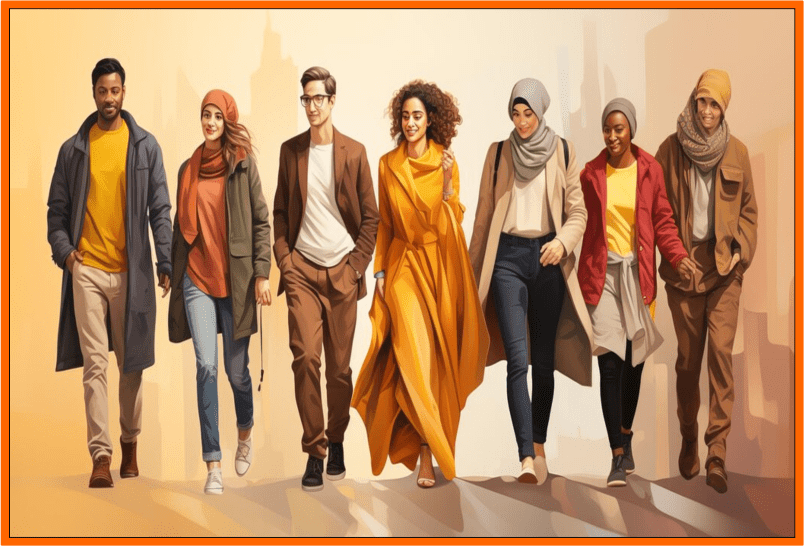Inclusive Fashion: Celebrating Diversity on the Runway
Introduction
In recent years, the fashion industry has undergone a transformative shift towards inclusivity and diversity. No longer confined to one size, shape, or color, the runway now celebrates people of all backgrounds, genders, and body types. This article delves into the world of inclusive fashion, highlighting the importance of this movement and the impact it has on both the industry and society at large.
Embracing Diversity in Fashion
Fashion is no longer an exclusive club. Gone are the days when runways only showcased tall, slender models. Today, designers are acknowledging the beauty in diversity, and it’s changing the face of the industry.
Breaking Stereotypes: Challenging Beauty Norms
The fashion world is breaking stereotypes and challenging traditional beauty norms. Models with disabilities, plus-size individuals, and people from various ethnic backgrounds are gaining visibility, redefining beauty standards.
The Power of Representation
Inclusive fashion goes beyond just promoting diversity; it’s about representation. When people see themselves on the runway and in campaigns, it fosters a sense of belonging and empowerment.
The Evolution of Inclusive Fashion
The journey towards inclusive fashion has been a significant one, with several milestones marking its progress.
Body Positivity Movement
The body positivity movement has played a pivotal role in changing perceptions. It encourages individuals to love and accept their bodies, regardless of size or shape.
Adaptive Clothing
Designers are creating adaptive clothing lines, catering to individuals with disabilities. These innovations are making fashion accessible to everyone.
Gender-Neutral Fashion
Breaking down gender barriers, gender-neutral fashion is gaining traction. Androgynous styles are becoming increasingly popular, allowing people to express themselves freely.
Fashion Brands Leading the Way
Numerous fashion brands have embraced the inclusivity movement and are leading by example.
Nike’s “Plus Size” Activewear
Nike’s inclusive activewear line caters to plus-size athletes, promoting fitness for everyone, regardless of their body size.
Tommy Hilfiger’s Adaptive Collection
Tommy Hilfiger’s adaptive clothing collection features stylish and functional pieces for people with disabilities, ensuring fashion is both accessible and chic.
Savage x Fenty by Rihanna
Rihanna’s Savage x Fenty lingerie brand celebrates diversity on the runway, with models of various sizes, ethnicities, and gender identities.
The Societal Impact
Inclusive fashion isn’t just a trend; it’s changing societal perceptions and promoting acceptance.
Boosting Self-Esteem
Seeing diverse models in fashion campaigns boosts the self-esteem of individuals who might have felt excluded in the past.
Encouraging Individuality
Inclusive fashion encourages people to embrace their unique styles, rather than conforming to societal expectations.
Fostering Acceptance
It promotes acceptance and empathy, making society more inclusive and understanding of differences.
The Future of Inclusive Fashion
The future of fashion looks bright as inclusivity continues to take center stage.
Sustainable and Inclusive
Inclusivity and sustainability are becoming intertwined, with ethical fashion brands leading the way.
Customization and Personalization
Fashion will become more personalized, with clothing tailored to individual preferences and needs.
Global Acceptance
Inclusive fashion is a global movement, breaking boundaries and bringing cultures together through style.
Conclusion
Inclusive fashion is more than just a trend; it’s a movement that is reshaping the industry and society as a whole. By celebrating diversity on the runway, fashion is fostering acceptance, boosting self-esteem, and promoting a more inclusive world.
FAQs
- What is inclusive fashion?
- Inclusive fashion celebrates diversity and features models of all backgrounds, genders, and body types on the runway.
- How has the fashion industry changed in recent years?
- The fashion industry has become more inclusive by embracing models with disabilities, plus-size individuals, and people from various ethnic backgrounds.
- Why is representation in fashion important?
- Representation in fashion fosters a sense of belonging and empowerment among individuals who see themselves in campaigns and on the runway.
- Which fashion brands are leading in inclusive fashion?
- Brands like Nike, Tommy Hilfiger, and Savage x Fenty by Rihanna are at the forefront of the inclusive fashion movement.
- What does the future hold for inclusive fashion?
- The future of inclusive fashion is marked by sustainability, customization, and global acceptance, making it a transformative force in the industry.
In conclusion, inclusive fashion is reshaping the industry and society, paving the way for a more diverse, accepting, and inclusive world. As the fashion industry continues to evolve, it is essential to celebrate and support this movement towards greater representation and diversity on the runway.













